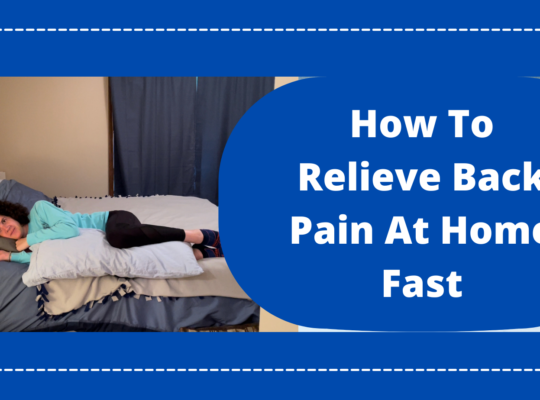You either love them or hate them. But the truth is, we all have to do them at some point, even if it’s to lift your dropped junk mail off of the floor. Have you ever wondered how to fix pain with squatting?
Do any of these sound like you?
- Feeling like your knees are going to explode
- Having pain in your knees or hips during or after the movement
- Feeling off balance or like you’re going to fall backwards
- Doing them consistently and your peaches aren’t getting lifted
What gives? Have no fear, we’ve got you covered.
The truth is, it’s simply a matter of figuring out the issues, strengthening or stretching, and practicing the movement pattern correctly in order to make progress. Let’s see if we can shed some light.
Potential Problems (Hint: You could have more than one of these 😬)
- Quads not strong enough
- Soft tissue restriction/tightness in quad muscle belly
- Weakness in glute max
- Weakness in glute med
- Weakness at ankles or feet
- Tightness at hip rotators/flexors
- Decreased ankle mobility
How Do You Know Which One You Have, and How Do You Fix Pain With Squatting?
The way to figure this out is to watch yourself squat in the mirror. Look at yourself from the front and from the side and then determine which of the following is most likely.
Weakness in quads
You can spot an issue with the quads if there is increased pressure or pain in the front of the knees or along the knee cap during the motion. You may also feel achiness in the quad muscle or you may notice shaking in your quads in certain parts of the movement.
Fix: Work in a shortened range with your squats (i.e. don’t go as low) and avoid going past the point where you feel pain or increased pressure in your knees. You can work on building strength in a shorter range and gradually work your way to lower positions again. Additionally, you can use a leg press for strengthening because it mimics the squat movement with lower force.
You can also use a more hip dominant squat pattern as opposed to a knee dominant pattern. This means starting the motion by sitting the hips back first before the knees bend. You should feel your weight shift toward your heels. Check out the video below for more details.
Weakness in glute max
This may be the case if when you squat low, you feel like you’re going to fall backwards. You may also feel like you need to lean your trunk forward or transfer your weight onto the balls of your feet in lower ranges in order to maintain balance (pictured below). You may also not feel work happening in your tush with squatting.
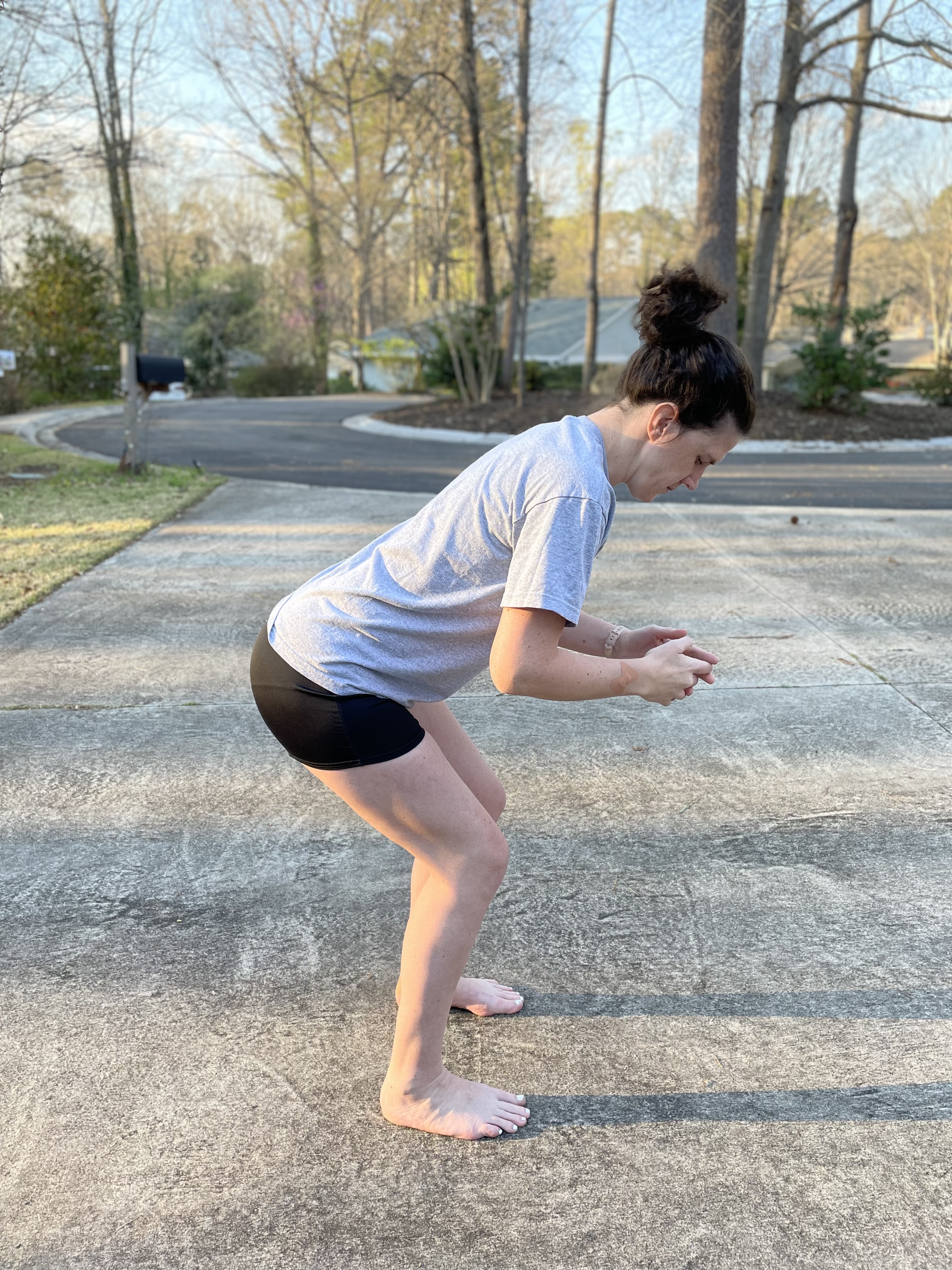
Fix: Make sure that you know how to actively engage your glute muscles. You can perform a few glute bridges or hip extensions while making sure to squeeze your glutes. Do them prior to squatting to make sure that the glutes are active and engaging. If you still aren’t sure, place your hands on your glutes. Then make sure you can feel the muscles tightening under your fingers while performing the movements.
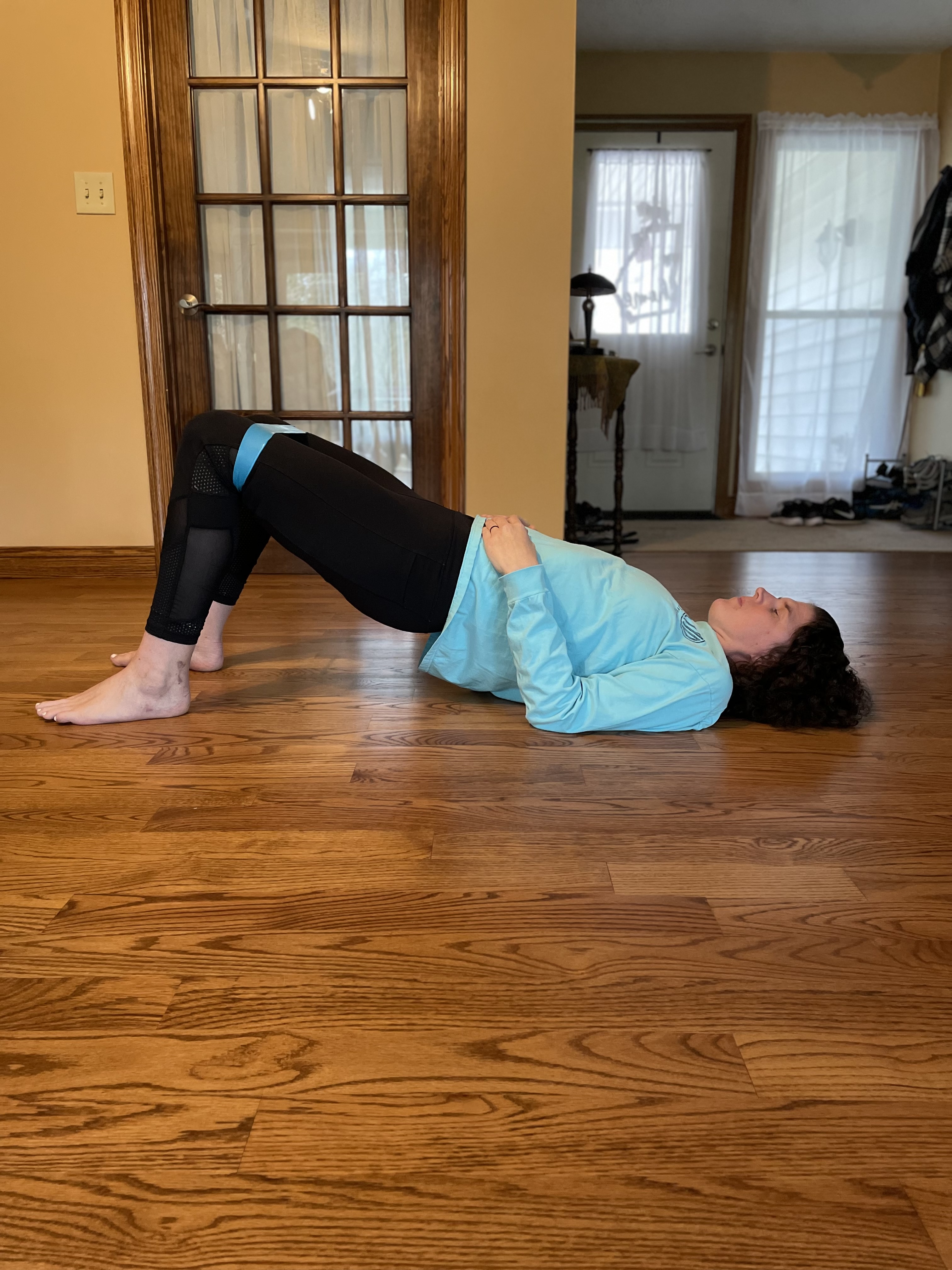
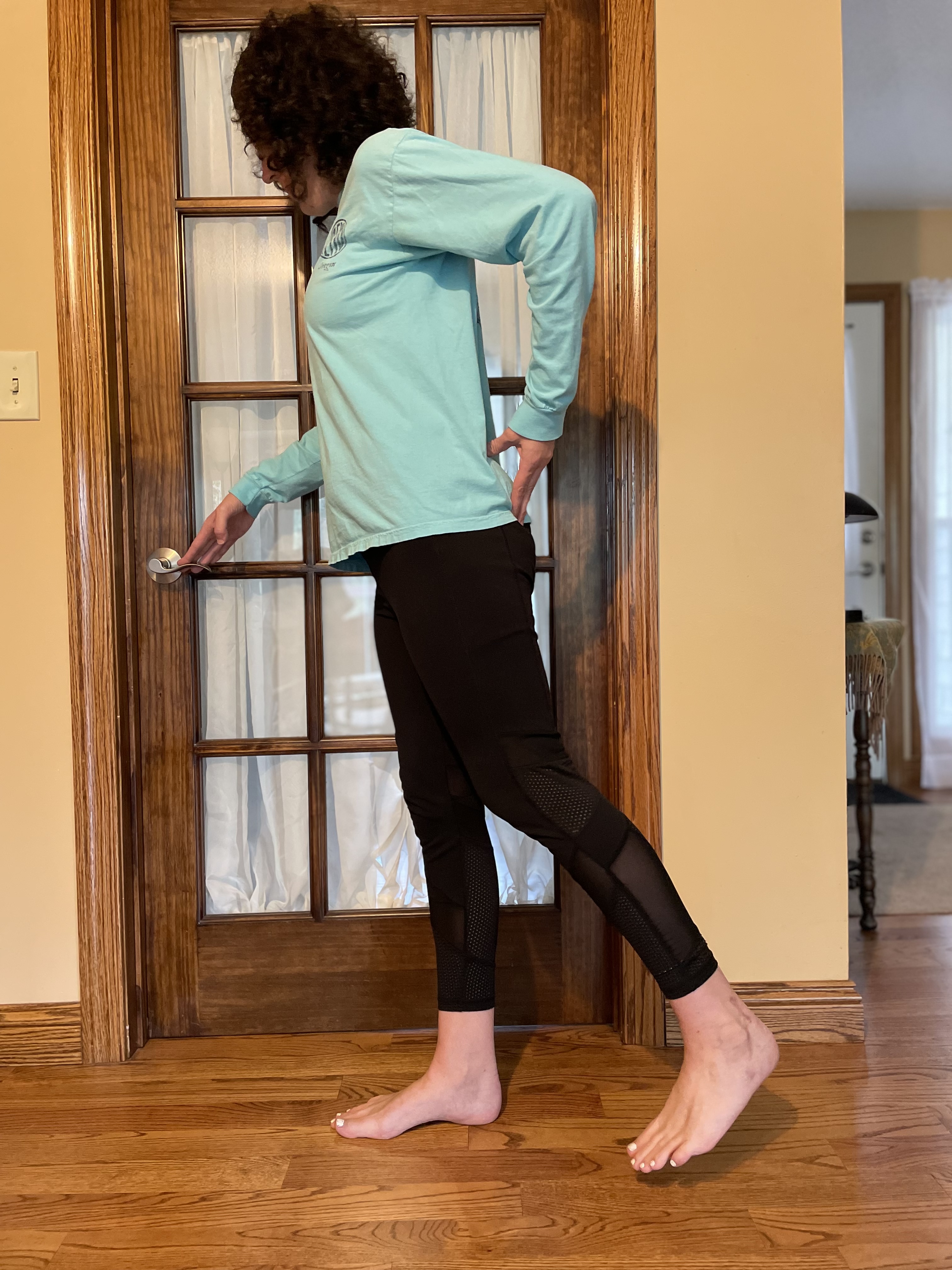
Weakness in glute med
When viewing yourself from the front, you will notice that your knees try to “kiss” or move closer together, especially in lower ranges of the motion. You may also notice them wobbling in and out as you move through the squat. If this has been a common pattern for you, you could also feel pain in your knees when this occurs.
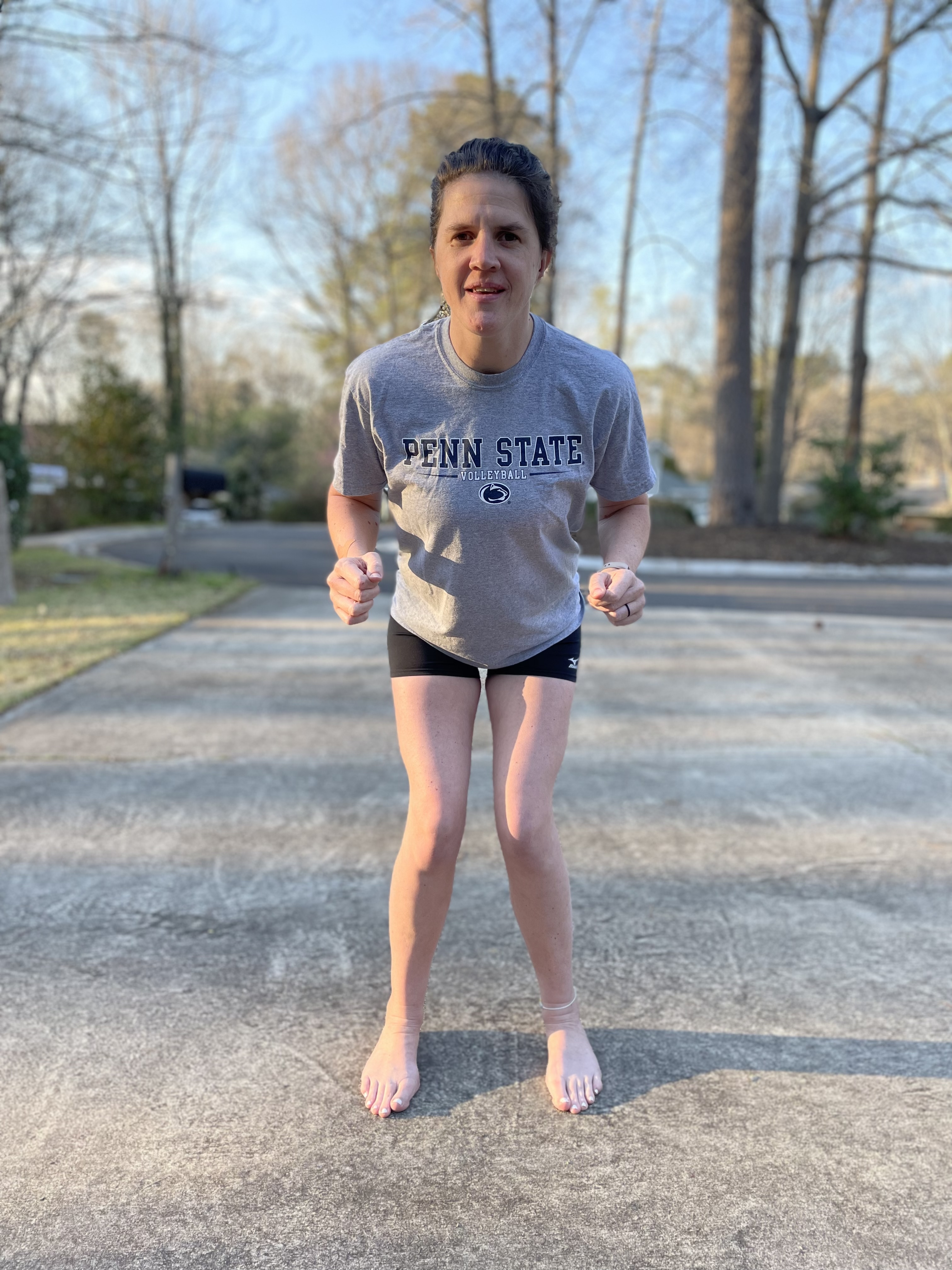
Fix: Make sure to press your knees outward while performing a squat. Tie an elastic band around your knees in order to improve the activation in the glutes during the movement.
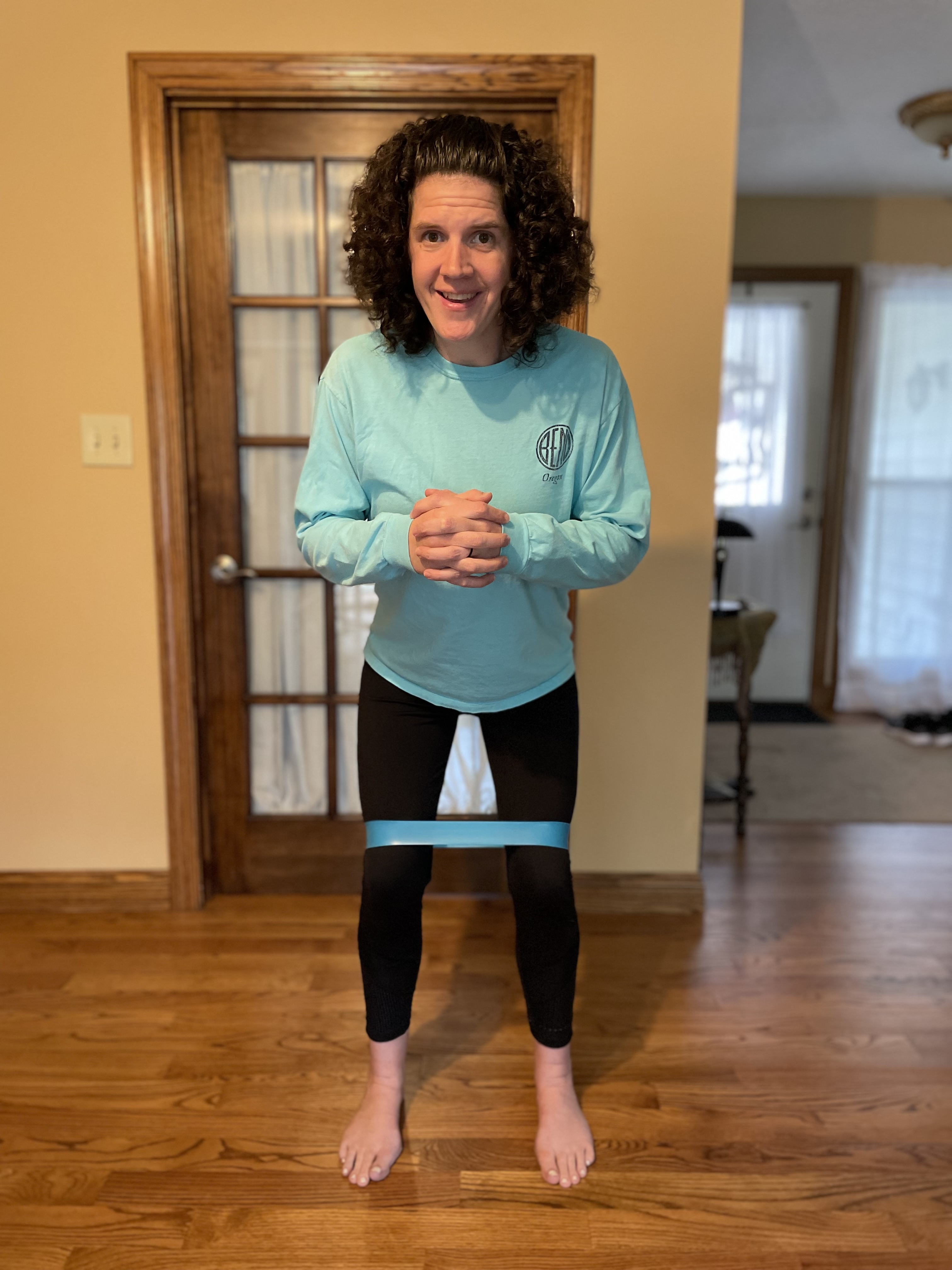
Weakness at ankles or feet
Viewing yourself from the front, you will notice that your arch seems to cave in or your toes appear turned out. You may feel increased pressure on the inner arches of your feet.

Fix: Press the ball of your foot down into the ground to fire up your arches during your squat. You can also perform calf raises and balancing on one leg to help strengthen the area. Both of these exercises get the ankle muscles to react.
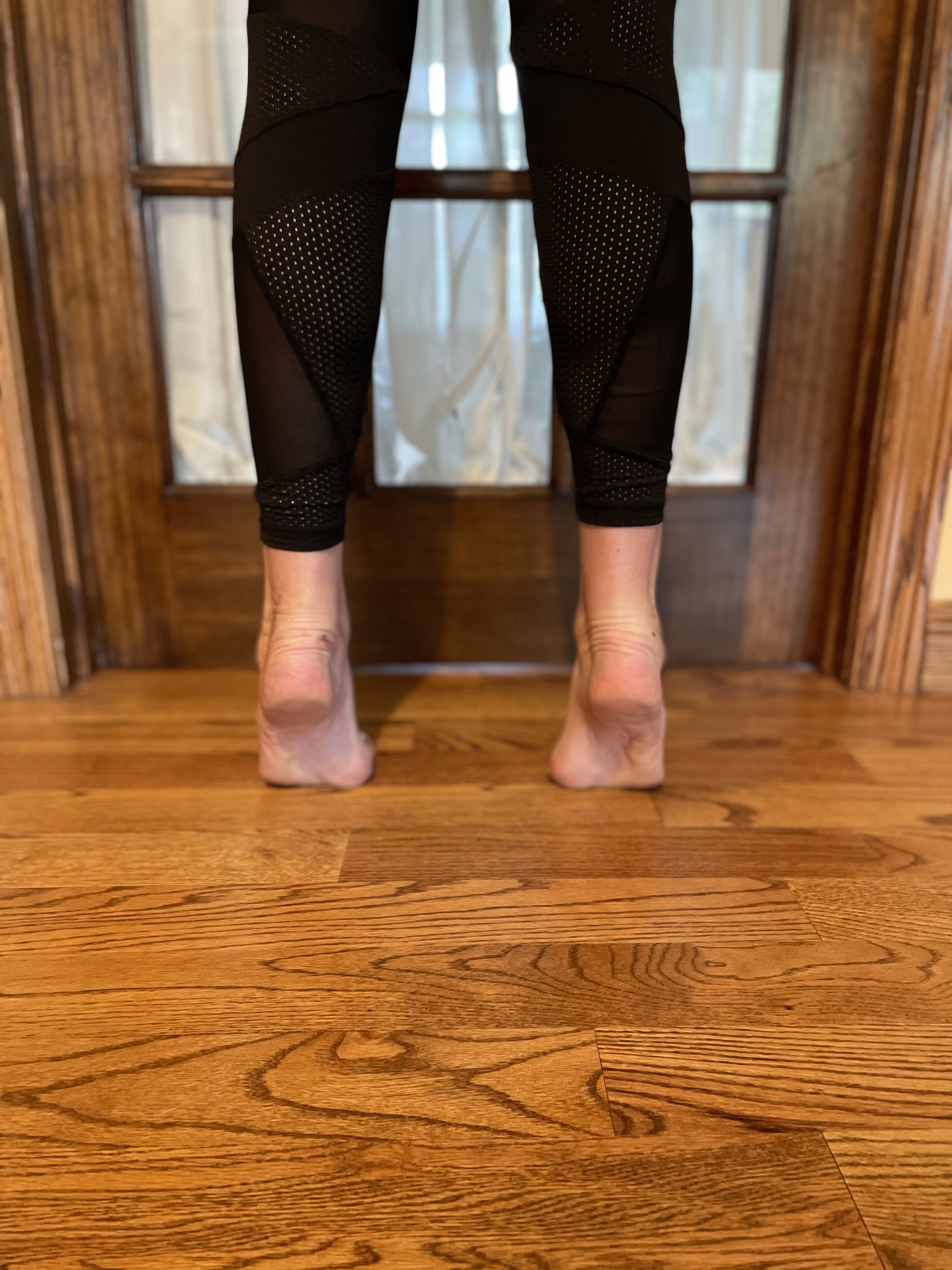

Tightness in hip flexors or quads
If you don’t have a regular stretching routine, then this may be the case. Perform a Thomas test to find out.
- Lay on the edge of the bed and hug one knee in tight to your chest.
- Let the other leg hang off the side and relax.
- Check alignment
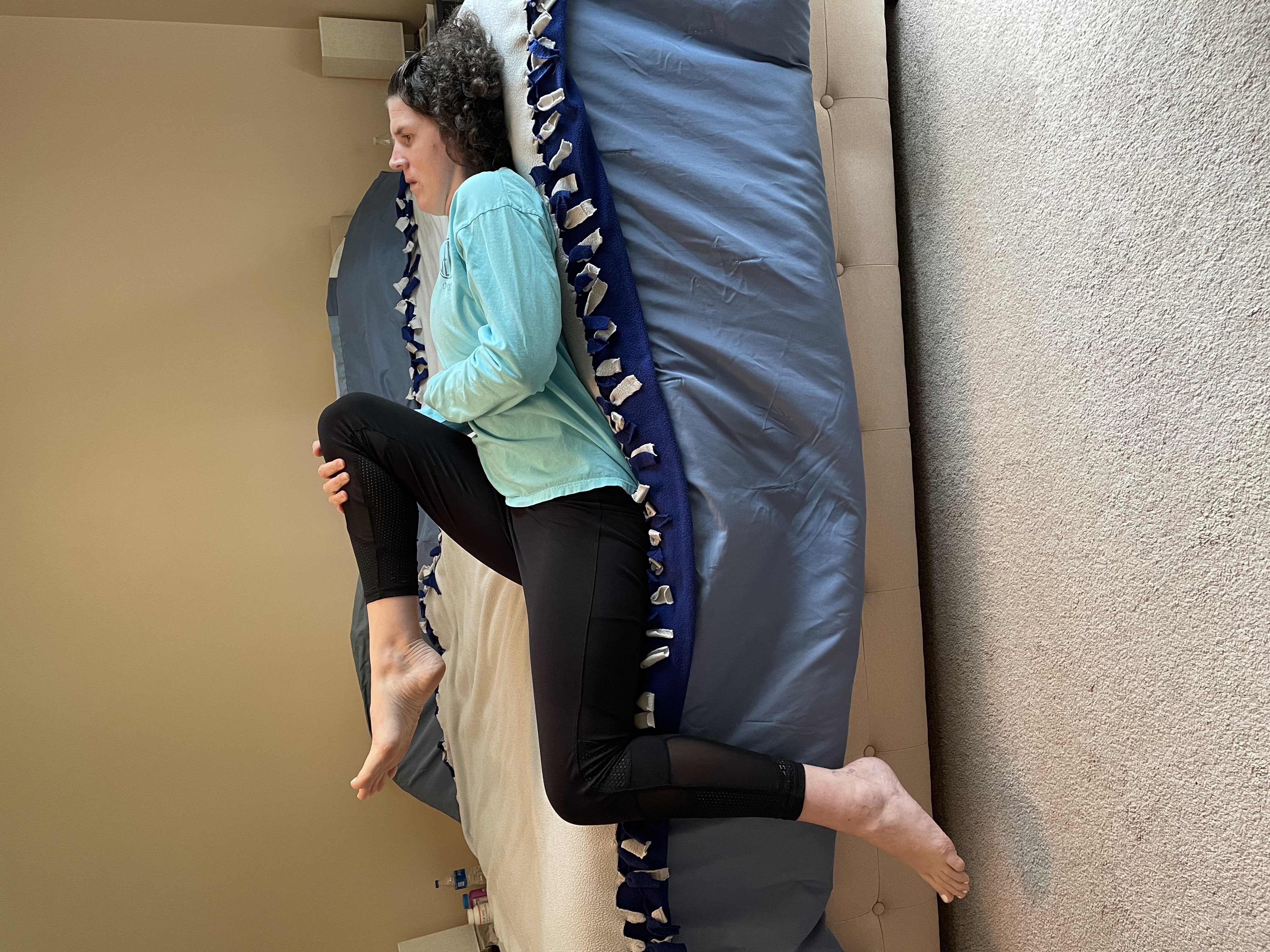
If your can’t get your thigh to run in line with your body, then your hip flexor is restricted. Here, the low back is arching, so the trunk and the thigh are not straight.
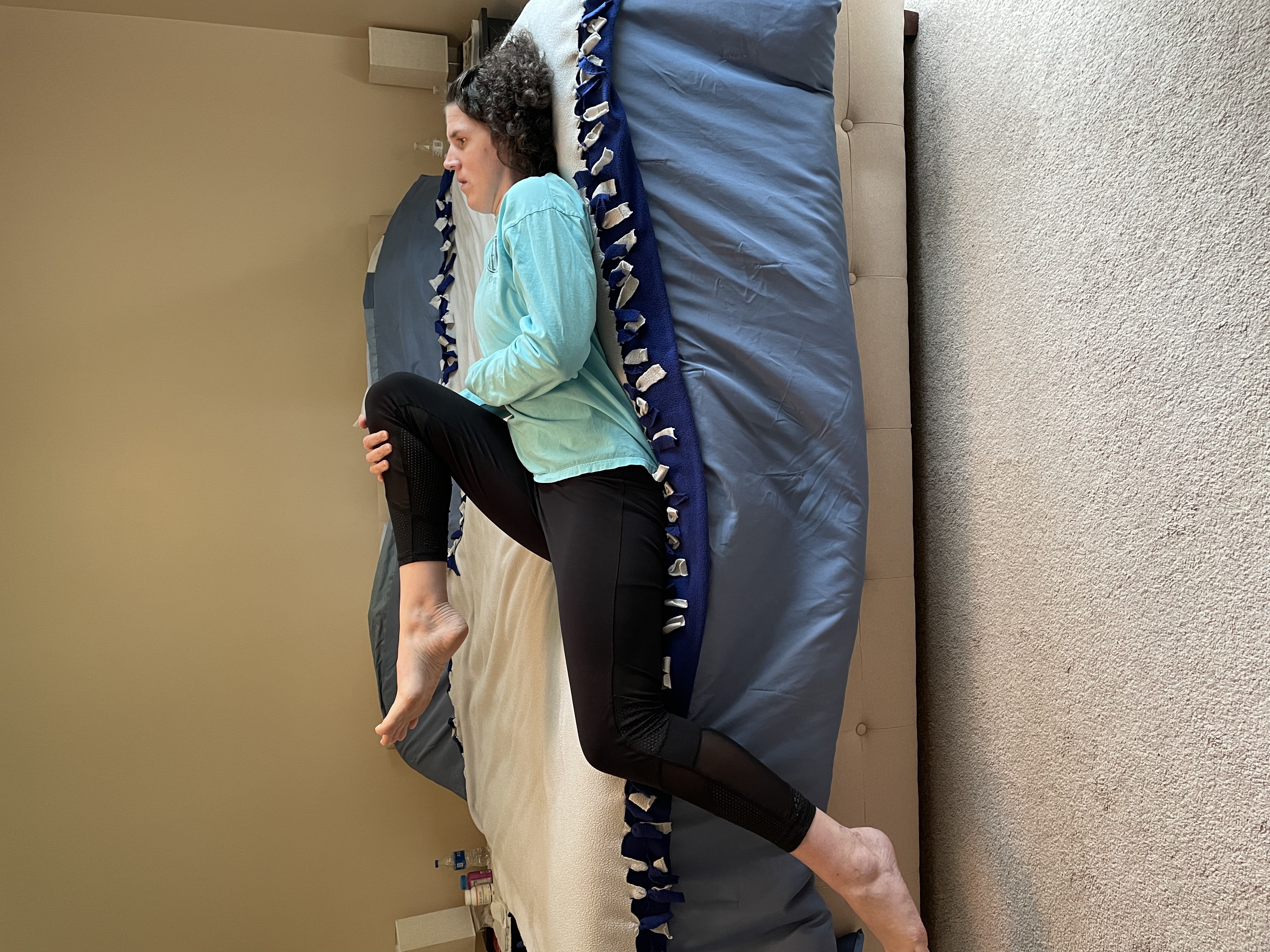
If your knee is not bent to a 90 degree angle, then your quads are tight.
Fix: Perform a hip flexor or quad stretch by holding the testing position above. You can also perform a standing stretch if there is no increased pain.
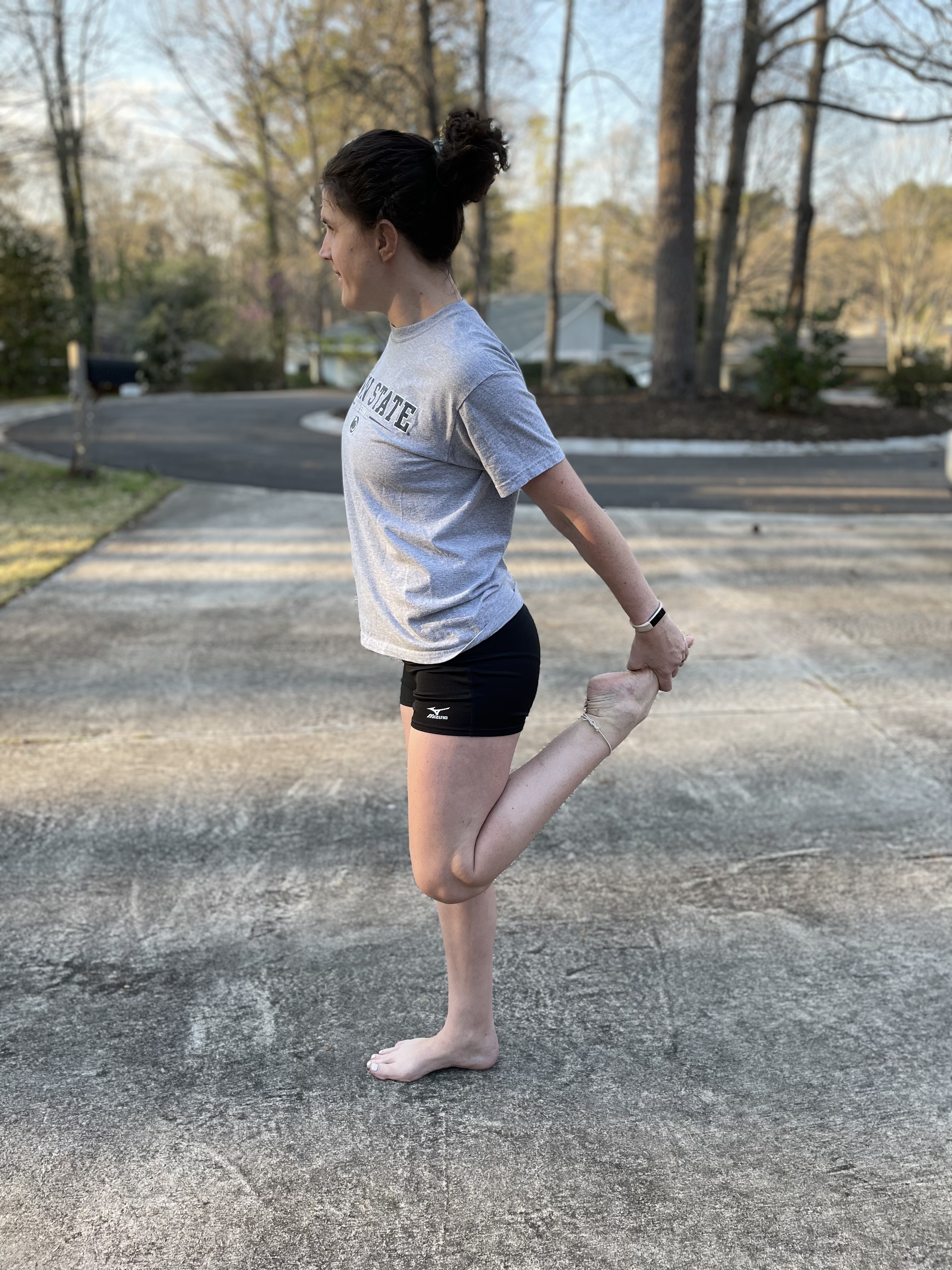
Grab onto the foot and think of pushing the knee back while pulling the heel toward the back of the thigh. You should feel the stretch through the whole front of your thigh.
Decreased ankle mobility
Decreased range in the ankle that affects squatting can be coming from either tightness in the soleus muscle, or restriction in the ankle joint itself.
The soleus flexibility test can help you tease out which one it is.
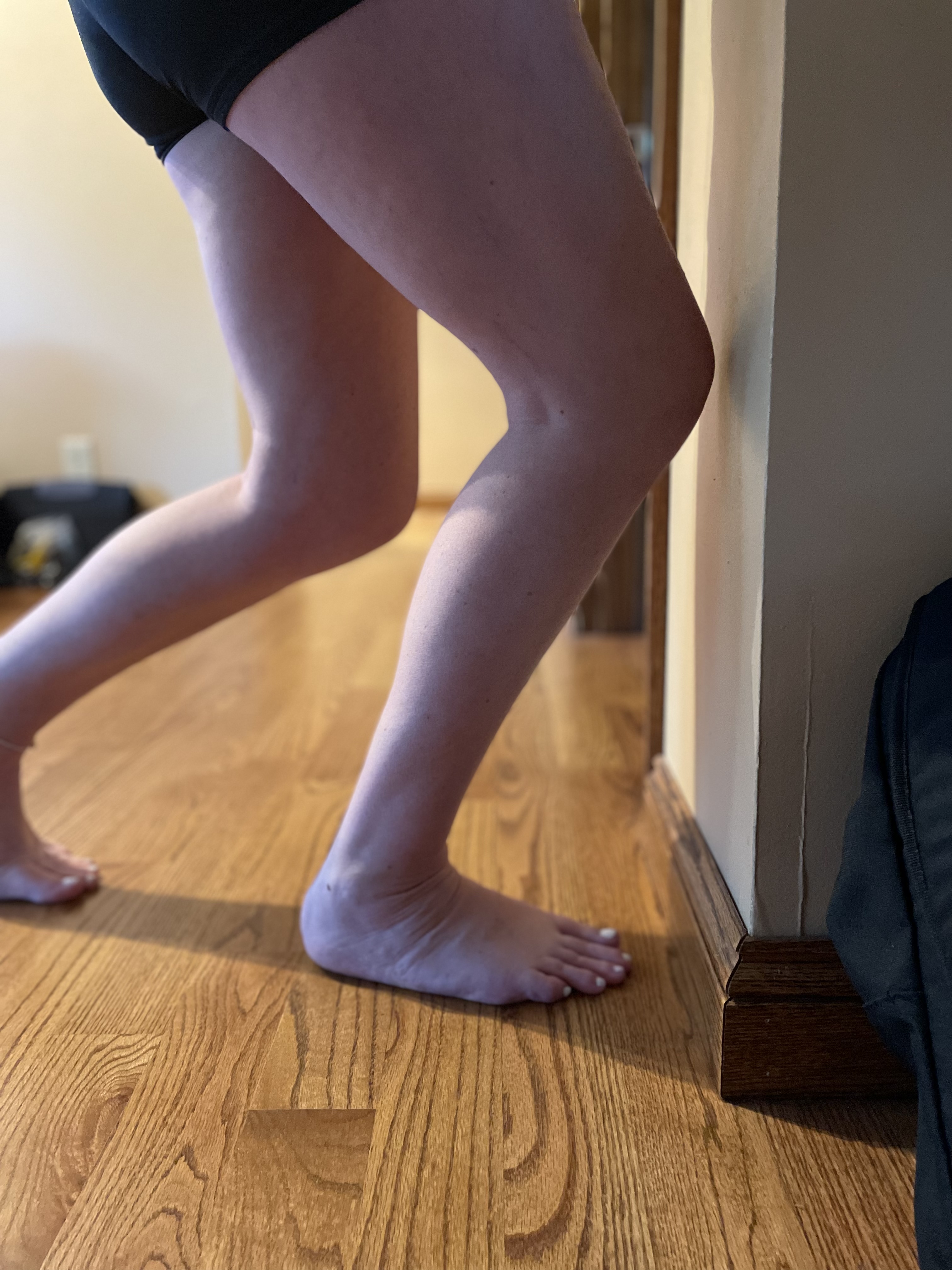
To perform, set up with your big toe 10 cm from the wall, you should be able to touch your knee to the wall without your heel rising off the ground. If your soleus is tight, you will feel pulling in the bottom of your calf. But, if your ankle is tight, you will feel If you don’t have the mobility, then you will either get more motion from the knees or hips. Or you could cave into the arch of your foot in order to “cheat” the restriction in the ankle to achieve the motion.
Fix: Perform a soleus stretch by setting up in the soleus flexibility test position but a bit further back from the wall. Then, sink your knee toward the wall until you feel a stretch in the bottom of your calf.
Perform an ankle dorsiflexion mobilization to open up the ankle joint.
Pro Tips
If any of these movement faults are present, it could also eventually lead to pain in the low back or other areas of the body with squatting and lifting tasks. This is because the back can get overloaded when other areas below it aren’t “pulling their weight.”
Just because you feel pain in one place doesn’t mean the issue is necessarily stemming from that area. For instance, you could have decreased ankle mobility and feel the pain in your knees. Or you could have weakness in your glutes and feel the pain in the knees or ankle. Getting a movement assessment from a professional trained to test each of these joints will eliminate the guess work in fixing pain with squatting.
(c) [2022] [Intuitive Choice Physical Therapy and Wellness]


